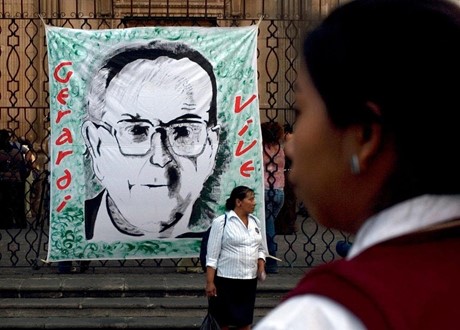
On December 16 2020, HBO released a documentary titled The Art of Political Murder. The film is an in-depth look at the investigation that took place after the brutal assassination of Guatemalan Catholic Bishop Juan José Gerardi Conedera, who fought for justice and accountability after the end of the Guatemalan Civil War. He was murdered in 1998, shortly after presenting a report which identified the Guatemalan military’s role and involvement in the killing and disappearance of thousands of the country’s Maya indigenous peoples.
Although the assassination shook the populace at its core, it did not successfully instill fear into those trying to bring about justice. As human rights activists, journalists, investigators, lawyers, and judges attempted to solve the case, they faced smear campaigns, evidence tampering, death threats, and assassination attempts. The case came to represent a crossroad for the nation, with one side clinging on to the hope that rule of law can be instilled in a nation that had long been defined by war, corruption, and narco-trafficking.
After three military officers and one priest were arrested as suspects, the turning point came when Yasmín Barrios, the trial judge, refused to withdraw herself from the case after she faced an assassination attempt. She arrived at the courtroom the very next day, looked at the cameras without saying a word, and began the trial. Throughout its duration, around 6000 documents were presented as evidence and over 100 witnesses testified. When the military officers are found guilty, tears of joy are seen everywhere as the unthinkable happened. “Our protection of the justice system,” said one lawyer, “was the last thing stopping Guatemala from becoming a narco-state.” 20 years later, as the country continues to face similar issues, Bishop Conedera’s face continues to be seen everywhere, representing a hope that there can be accountability in a place long-defined by the state’s abuse of power.
Although the interviews can be rather long and dry at times, those who are interested in criminal law will appreciate the amount of courtroom footage that is shown, the re-enactment of the crime scene, and the step-by-step details of the investigation that eventually led to the final verdict. A fair amount of time is also dedicated to discussing the country’s civil war, specifically Bishop Conedera’s efforts to hold authority figures who committed human rights violations accountable. The documentary manages to successfully illustrate the historical, legal, and political context of the trial, so viewers do not have to worry about not having any background knowledge in the subject matter.
